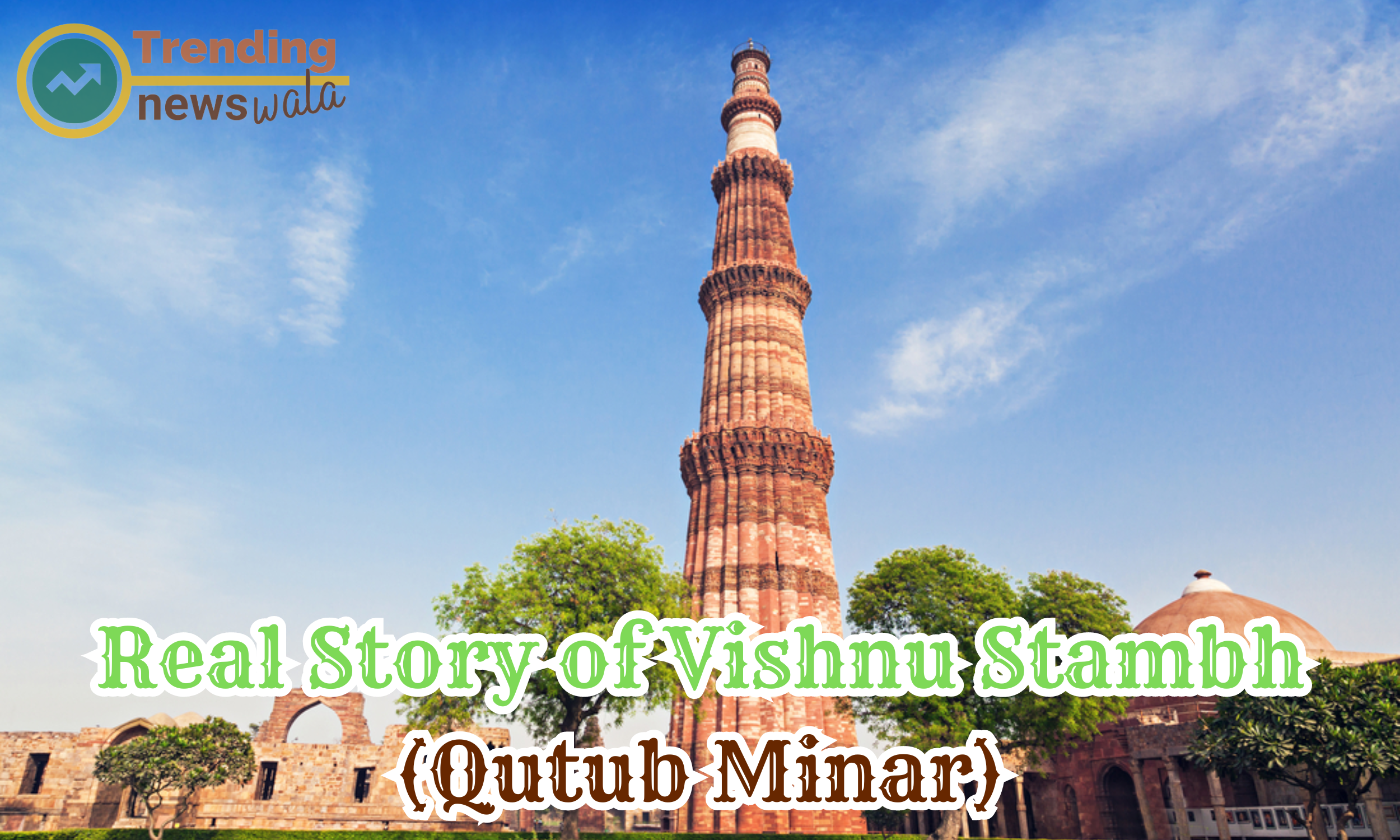Standing tall amidst the historical landscape of Delhi, the Qutub Minar is not merely an architectural marvel but also a symbol of India's rich history and cultural heritage. Often referred to as Vishnu Stambh, the Qutub Minar holds a fascinating narrative that weaves together ancient dynasties, religious transformations, and architectural prowess. This article embarks on a journey to unravel the real story of Vishnu Stambh, now known as Qutub Minar, and explore the layers of history and cultural significance that enshroud this iconic monument.
The Qutub Minar, with its origins as Vishnu Stambh, stands as an enduring symbol of India's historical journey. From the ancient iron pillar representing Hindu craftsmanship to the Islamic architectural marvel that graces the Delhi skyline, the minar encapsulates the essence of cultural amalgamation and the resilience of heritage through the ages. As visitors explore the Qutub complex, they not only witness the grandeur of the past but also contribute to the preservation of a living testament to India's rich and diverse history.
Origins and Construction
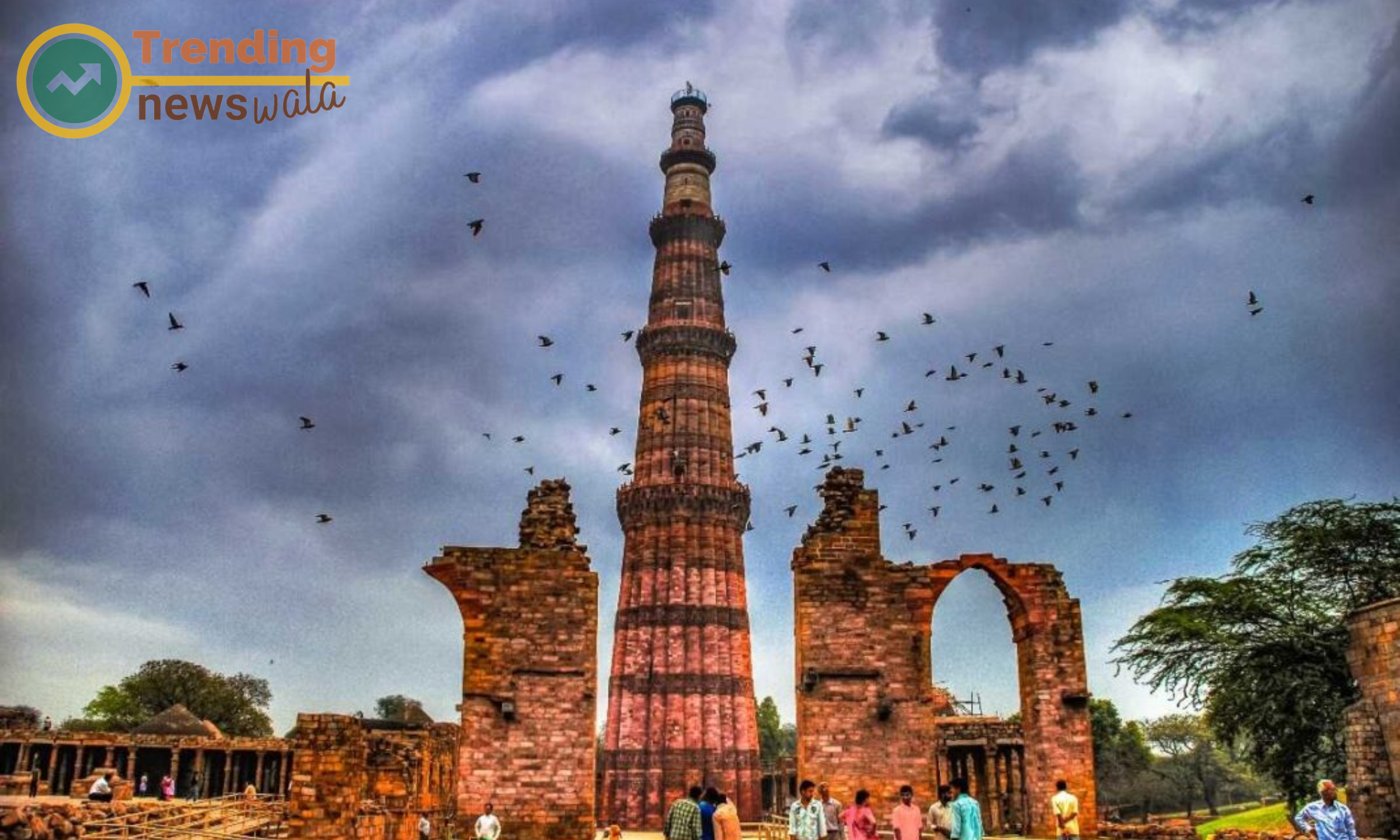
The Qutub Minar, constructed predominantly of red sandstone and marble, stands at a majestic height of 73 meters. Its construction was initiated by Qutb-ud-din Aibak, the first Muslim ruler of Delhi, in the early 13th century. The minar was later completed by his successor, Iltutmish, and subsequently expanded by Firoz Shah Tughlaq and other rulers.
Vishnu Stambh:
- The Qutub Minar was commissioned by Qutb-ud-din Aibak, the first ruler of the Delhi Sultanate, in the late 12th century. It was initially built as the "Vishnu Stambh" to commemorate his victory over the Rajput king, Prithviraj Chauhan.
- The term "Vishnu Stambh" suggests that the tower was dedicated to Lord Vishnu, a significant deity in Hinduism. This indicates the syncretic nature of the early Islamic rulers, who often repurposed pre-existing structures and incorporated elements from the conquered regions into their architecture.
Initial Structure:
- Qutb-ud-din Aibak started the construction of the Qutub Minar in 1199 AD. The initial structure was a square base with a single storey.
- The early construction incorporated distinctive features of Indo-Islamic architecture, such as intricate carvings and calligraphy.
Additions by Iltutmish:
- Aibak's successor, Iltutmish, continued the construction of the Qutub Minar and added three more storeys. Each storey had unique architectural elements, and the tower gradually became cylindrical.
- Iltutmish also placed a prominent balcony at the top of the tower.
Firoz Shah Tughlaq's Contributions:
- In the 14th century, Firoz Shah Tughlaq made further additions to the Qutub Minar. He added the fifth and final storey, giving the minar its present height of around 73 meters (240 feet).
- Firoz Shah Tughlaq also constructed the Alai Darwaza, an impressive gateway, and the adjacent mosque, Quwwat-ul-Islam Mosque.
Materials Used: The Qutub Minar is primarily constructed using red sandstone and marble. The use of these materials gives the monument its distinctive appearance and contributes to its durability.
Iron Pillar: Adjacent to the Qutub Minar stands the famous Iron Pillar of Delhi. Though not directly related to the minar's construction, it is an integral part of the complex. The iron pillar is believed to have been erected in the 4th century and is a testament to ancient Indian metallurgical expertise.
In summary, the Qutub Minar underwent construction over multiple centuries, with different rulers contributing to its expansion and architectural evolution. The shift from a Hindu-inspired Vishnu Stambh to a towering Islamic monument reflects the cultural amalgamation and the complex history of Delhi during the medieval period. The Qutub Minar stands as a symbol of the diverse influences that have shaped India's architectural and cultural heritage.
Vishnu Stambh - The Ancient Pillar
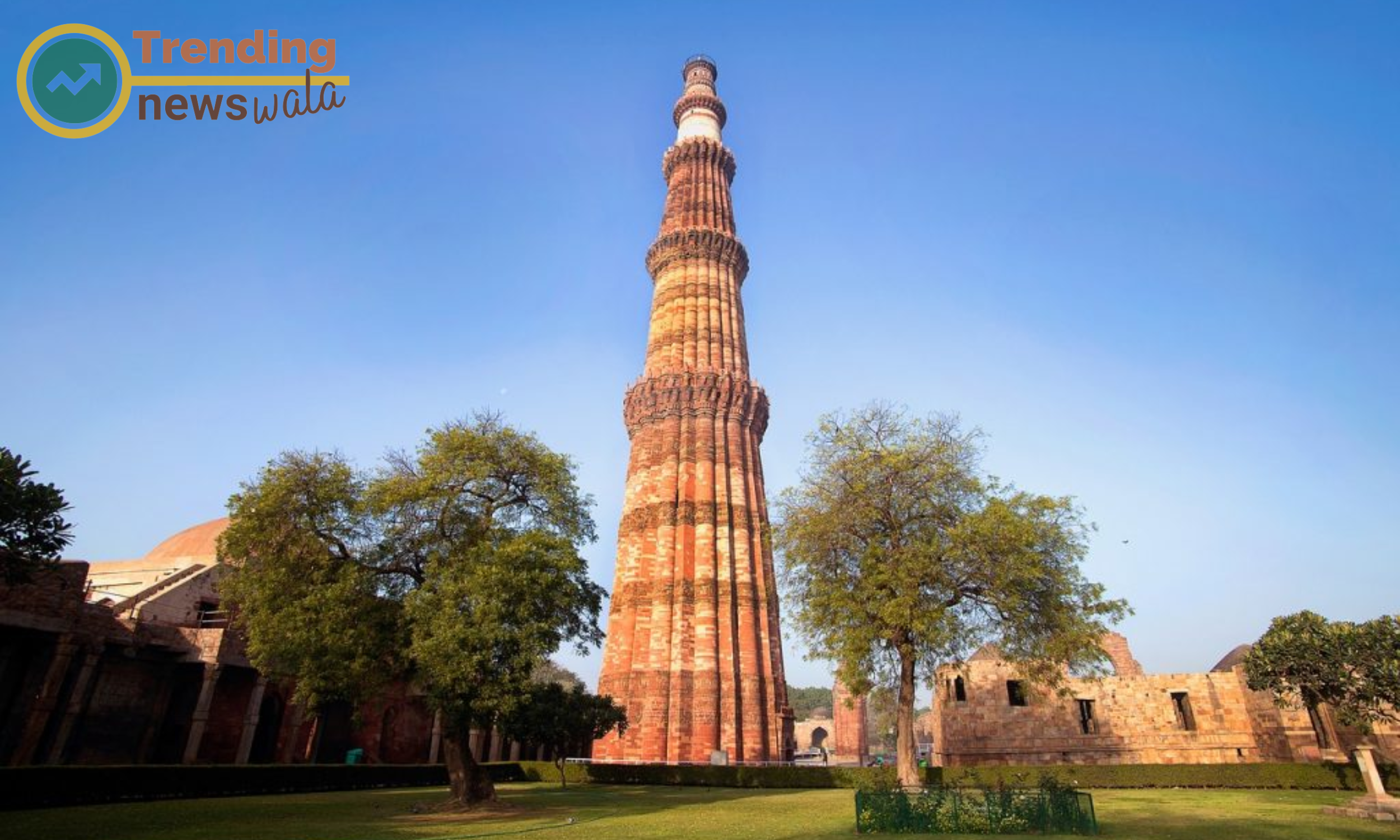
The origins of Qutub Minar are deeply rooted in history, with the structure believed to have been inspired by an ancient Vishnu temple. The Qutub complex itself was built upon the ruins of 27 Hindu and Jain temples, and the central pillar within the complex, known as the Iron Pillar of Delhi, is often referred to as Vishnu Stambh. This iron pillar, made of pure wrought iron and standing without rusting for over a millennium, has intrigued historians and scientists alike.
The term "Vishnu Stambh" refers to the early form of the Qutub Minar, which was initially commissioned by Qutb-ud-din Aibak, the founder of the Delhi Sultanate, in the late 12th century. The name "Vishnu Stambh" translates to "Vishnu's Pillar," indicating its association with the Hindu deity Vishnu. Here are more details about the Vishnu Stambh or the Ancient Pillar:
Symbolism and Purpose:
- The construction of the Vishnu Stambh was intended to celebrate Qutb-ud-din Aibak's victory over the Rajput king Prithviraj Chauhan in 1192 AD.
- The choice of dedicating the pillar to Lord Vishnu, a major deity in Hinduism, reflects the syncretic nature of the early Islamic rulers. It was not uncommon for them to repurpose existing structures and incorporate elements from the regions they conquered.
Architectural Features:
- The initial structure of the Vishnu Stambh had a square base with a single storey. It was likely a simple pillar with intricate carvings and inscriptions, showcasing the craftsmanship of the time.
- The architectural style of the early construction incorporated elements of Indo-Islamic architecture, blending Islamic influences with local traditions.
Transformation Over Time:
- While the initial purpose was to celebrate a military victory, subsequent rulers, including Iltutmish and Firoz Shah Tughlaq, made significant additions and modifications to the structure.
- Under Iltutmish, three more storeys were added, transforming the structure into a cylindrical tower. Firoz Shah Tughlaq later added the fifth and final storey, completing the transformation into the iconic Qutub Minar.
Cultural Amalgamation:
- The transition from Vishnu Stambh to Qutub Minar reflects the cultural amalgamation that occurred during the medieval period in India. The monument evolved from its Hindu origins to become a symbol of Islamic architecture, incorporating diverse influences and showcasing the coexistence of different cultural and religious elements.
Historical Significance:
- The construction of the Vishnu Stambh and its subsequent transformation into the Qutub Minar is historically significant as it represents the changing political and cultural landscape of Delhi during the medieval period.
- The Qutub Complex, including the Qutub Minar and other structures, is recognized as a UNESCO World Heritage Site, acknowledging its importance in preserving India's rich architectural and historical heritage.
In summary, the Vishnu Stambh, initially dedicated to Lord Vishnu, underwent a significant transformation over the centuries, ultimately becoming the Qutub Minar. This transformation reflects the cultural, religious, and architectural exchanges that characterized medieval India and highlights the enduring legacy of the monument.
Islamic Influence and Symbolism

As Delhi transitioned from Hindu rule to the Islamic Sultanate, the Qutub Minar and its complex became a symbol of the victorious arrival of the new rulers. The minar's distinctive architectural style, characterized by intricate carvings and calligraphy, reflects a fusion of Indo-Islamic artistry.
The Qutub Minar, with its Islamic influence and symbolism, represents a significant architectural and cultural transition in medieval India. Here are more details about the Islamic influence and symbolism associated with the Qutub Minar:
Architectural Style: The Qutub Minar is a prime example of Indo-Islamic architecture, which emerged as a fusion of Islamic and indigenous Indian architectural styles. The minar exhibits elements such as intricate geometric patterns, calligraphy, and pointed arches that are characteristic of Islamic architecture.
Arabic Inscriptions: The Qutub Minar is adorned with Arabic inscriptions from the Quran, praising the victories and virtues of the rulers who commissioned its construction. These inscriptions serve both a decorative and symbolic purpose, emphasizing the Islamic identity of the monument.
Islamic Calligraphy: The tower features intricate Islamic calligraphy, including verses from the Quran and other religious texts. Calligraphy is an essential element in Islamic art, and its incorporation into the Qutub Minar adds to the overall aesthetic and cultural significance of the monument.
Mamluk and Persian Influence: The early Afghan rulers of the Delhi Sultanate, including Qutb-ud-din Aibak and Iltutmish, were part of the Mamluk dynasty. The architectural style of the Qutub Minar reflects Mamluk influence, characterized by the use of arches, domes, and geometric patterns Subsequent rulers, particularly the Tughlaqs, brought Persian influence to the region, influencing the architectural details seen in the Qutub Minar.
Symbolism of Height: The towering height of the Qutub Minar symbolizes the power and might of the Islamic rulers. It is also believed to have been constructed as a symbol of victory over the Hindu rulers and a statement of the triumph of Islam in the region.
Mihrab and Mimbar: Inside the Qutub Minar, there is a mihrab (prayer niche) and a mimbar (pulpit). These features indicate that the tower may have been used for religious purposes, such as the call to prayer. This integration of religious elements within the structure is common in Islamic architecture.
Alai Darwaza: The Alai Darwaza, a prominent gateway in the Qutub Complex, is adorned with Islamic geometric patterns and calligraphy. It was constructed by Ala-ud-din Khilji and serves as another example of the Islamic architectural style prevalent during the medieval period.
Cultural Synthesis: The Qutub Minar stands as a symbol of cultural synthesis, showcasing the ability of Islamic rulers to incorporate local traditions and materials into their architectural projects. The use of indigenous red sandstone alongside marble exemplifies this synthesis.
In essence, the Qutub Minar, through its architectural elements, inscriptions, and symbolic features, embodies the Islamic influence on the cultural and historical landscape of medieval India. It serves as a testament to the coexistence of diverse cultural and religious traditions during that period.
The Quwwat-ul-Islam Mosque

Adjacent to the Qutub Minar stands the Quwwat-ul-Islam Mosque, one of the earliest mosques built in India. The mosque incorporates many pillars and materials from the demolished Hindu and Jain temples, further illustrating the complex's historical layers and the fusion of different architectural styles.
The Quwwat-ul-Islam Mosque, located within the Qutub Complex in Delhi, is one of the earliest and most significant examples of Indo-Islamic architecture in India. Here are more details about the Quwwat-ul-Islam Mosque:
Foundation and Construction: The construction of the Quwwat-ul-Islam Mosque began in the late 12th century during the reign of Qutb-ud-din Aibak, the first ruler of the Delhi Sultanate. It was built on the site of a pre-existing Hindu temple, and materials from these temples were repurposed in the construction of the mosque.
Indo-Islamic Architecture: The mosque represents the early phase of Indo-Islamic architecture in India, characterized by the fusion of Islamic and indigenous Indian architectural styles. It incorporates elements like domes, arches, and decorative calligraphy that are typical of Islamic architecture.
Adaptation of Hindu Temples: The Quwwat-ul-Islam Mosque incorporates elements from demolished Hindu and Jain temples. This adaptation is evident in the use of pillars with intricate carvings and sculptures, repurposed from the pre-existing structures, highlighting the cultural amalgamation during this period.
Iron Pillar: Adjacent to the mosque stands the famous Iron Pillar of Delhi. Though not part of the mosque's construction, it is associated with the complex. The iron pillar, believed to have been erected in the 4th century, showcases advanced metallurgical skills of ancient India.
Qutb Minar Complex Integration: The Quwwat-ul-Islam Mosque is an integral part of the larger Qutub Complex, which includes the Qutub Minar and other structures. The mosque and the minar are interconnected, sharing space within the complex, and they collectively represent the cultural and architectural evolution of the region.
Decorative Features: The mosque is adorned with intricate carvings, geometric patterns, and inscriptions from the Quran. The use of calligraphy on the walls and arches is a characteristic feature of Islamic art, contributing to the mosque's aesthetic appeal.
Alai Darwaza: The Alai Darwaza, a prominent gateway built by Ala-ud-din Khilji in the 14th century, serves as the entrance to the Quwwat-ul-Islam Mosque. It is an impressive structure with exquisite Islamic geometric patterns and calligraphy, adding to the grandeur of the complex.
Mihrabs and Arches: The mosque features multiple mihrabs (prayer niches) and arches, each displaying detailed carvings and Islamic calligraphy. These architectural elements serve both functional and decorative purposes within the mosque.
Historical Significance: The Quwwat-ul-Islam Mosque holds historical significance as one of the earliest mosques built in Delhi during the Sultanate period. It reflects the establishment of Islam in the Indian subcontinent and the adaptation of existing structures to suit the needs of the new ruling power.
In summary, the Quwwat-ul-Islam Mosque is a remarkable example of cultural synthesis, blending elements of Hindu, Jain, and Islamic architecture. Its historical and architectural significance makes it an essential component of the Qutub Complex, attracting visitors and scholars interested in the rich history of medieval India.
Inscriptions and Calligraphy

The Qutub Minar is adorned with inscriptions in Arabic and Nagari script, providing historical details and commemorating its builders. The calligraphy on the minar's surface is not merely decorative but also serves as a testament to the cultural assimilation that occurred during this period.
Inscriptions and calligraphy play a crucial role in Islamic art and architecture, including structures like the Quwwat-ul-Islam Mosque within the Qutub Complex. Here are more details about the inscriptions and calligraphy present in such architectural marvels:
Religious Inscriptions: The inscriptions on Islamic structures typically consist of verses from the Quran or other religious texts. These inscriptions serve to convey religious messages, glorify Allah, and express the piety and devotion of the builders.
Arabic Language: Arabic, the language of the Quran, is the primary language used in Islamicinscriptions. Even in regions where Arabic is not the native language, it holds a special status in Islamic art and is widely used for calligraphy in mosques and other religious structures.
Decorative Function: Calligraphy in Islamic art is not just a means of conveying information; it is highly decorative and adds aesthetic value to the structures. The art of calligraphy is considered a sacred and revered form of expression in Islamic culture.
Styles of Calligraphy: Islamic calligraphy encompasses various styles, each with its own characteristics. Some common styles include Kufic, Naskh, Thuluth, Diwani, and Nasta'liq. Different styles may be employed based on the purpose of the inscription and the aesthetic preferences of the artist.
Geometric and Floral Patterns: Calligraphy is often integrated with geometric and floral patterns to create a harmonious and visually appealing design. These patterns can be found on walls, arches, and domes of mosques and other Islamic structures, including the Quwwat-ul-Islam Mosque.
Mihrabs and Prayer Niches: Mihrabs, which are niches in the mosque indicating the direction of Mecca for prayer, are often adorned with elaborate calligraphy. These inscriptions may include verses from the Quran or other religious texts, emphasizing the sacredness of the prayer space.
Inscriptions on Domes and Arches: The exteriors of domes and arches in Islamic architecture are often adorned with inscriptions in calligraphic form. These inscriptions may serve both decorative and symbolic purposes, enhancing the visual appeal of the structure and reinforcing the Islamic identity of the building.
Symbolism and Devotion: Inscriptions and calligraphy in Islamic architecture symbolize the devotion of the builders to Islam and their desire to create spaces that reflect the divine. They also serve as a reminder to those entering the space about the religious significance and sanctity of the site.
Preservation and Restoration: The preservation and restoration of inscriptions and calligraphy on historical Islamic structures are of great importance. Efforts are made to maintain the original artwork, and in cases where damage has occurred, restoration work is carried out to ensure the continued appreciation of these cultural and artistic elements.
In summary, inscriptions and calligraphy in Islamic architecture, such as those found in the Quwwat-ul-Islam Mosque, serve both functional and decorative purposes. They convey religious messages, add aesthetic beauty, and contribute to the overall cultural and historical significance of the structure.
Firoz Shah Tughlaq's Contributions
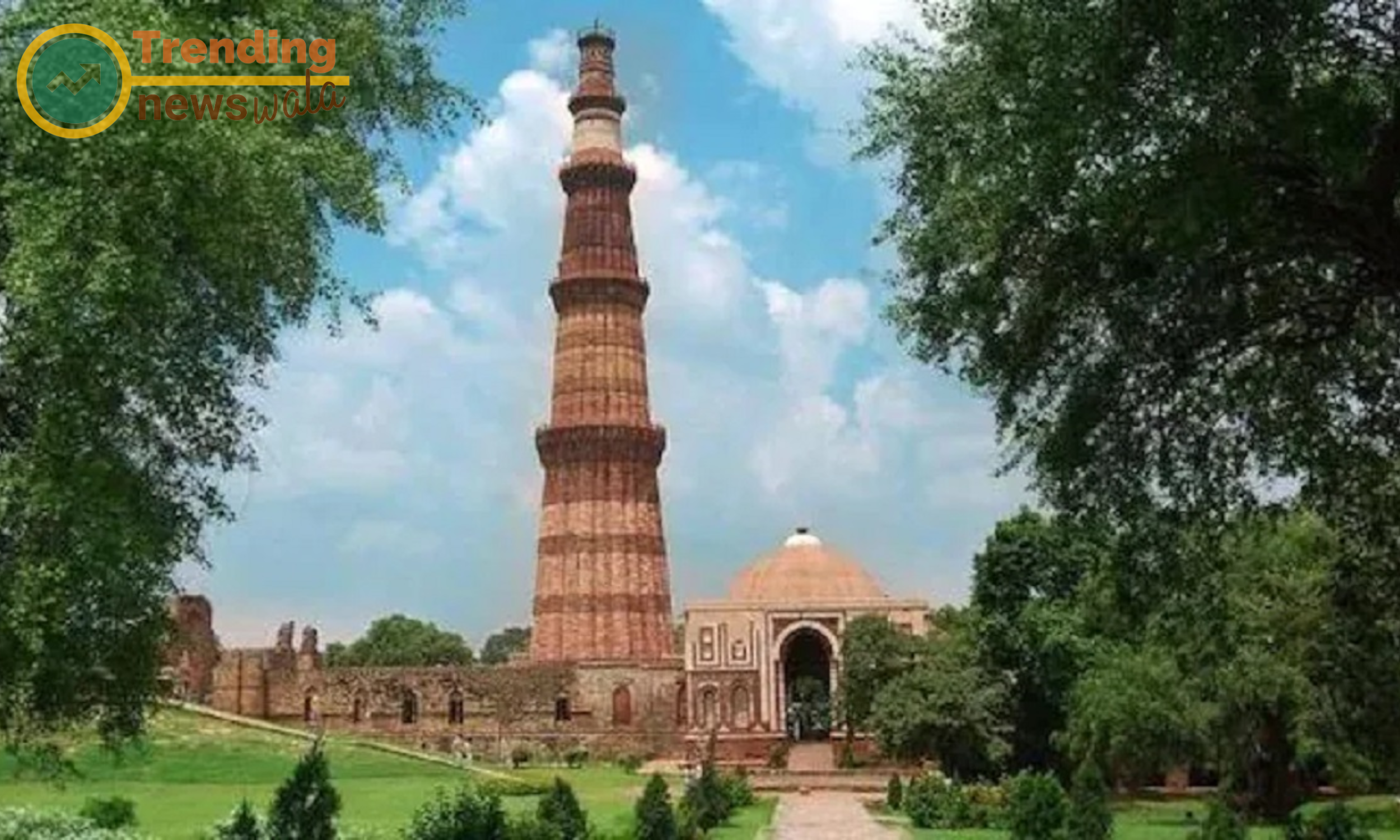
Firoz Shah Tughlaq, a later ruler, played a significant role in the preservation and restoration of the Qutub Minar. He added two more stories to the minar and inscribed additional inscriptions, emphasizing the historical continuity and the ruler's reverence for the structure.
Firoz Shah Tughlaq, a ruler of the Tughlaq dynasty in medieval India, made significant contributions to the Qutub Minar complex during the 14th century. His reign from 1351 to 1388 AD saw various architectural and infrastructural developments. Here are more details about Firoz Shah Tughlaq's contributions to the Qutub Minar complex:
Completion of Qutub Minar: Firoz Shah Tughlaq is credited with completing the construction of the Qutub Minar. While the construction of the minar had begun during the reign of Qutb-ud-din Aibak and continued under subsequent rulers, it was Firoz Shah Tughlaq who added the fifth and final storey, achieving the current height of approximately 73 meters (240 feet).
Restoration and Repair Work: Firoz Shah Tughlaq undertook extensive restoration and repair work on various structures within the Qutub Complex. This included repairing parts of the Qutub Minar that had been damaged by lightning and earthquakes over the years.
Addition of Pavilions: Firoz Shah Tughlaq added two pavilions to the top of the fifth storey of the Qutub Minar. These pavilions served both decorative and functional purposes, enhancing the architectural complexity of the minar.
Construction of Indo-Islamic Structures: Firoz Shah Tughlaq constructed several Indo-Islamic structures within the Qutub Complex. These included the construction of the famous Ashokan Pillar, also known as Firoz Shah's Lat, which he moved and placed near the Qutub Minar.
Building and Renovation of Mosques: Firoz Shah Tughlaq built and renovated several mosques within the Qutub Complex. His contributions included the construction of the mosque and tomb known as the Firoz Shah Tomb, which is located near the Qutub Minar.
Construction of Canals: Firoz Shah Tughlaq was known for his interest in hydraulic engineering. He constructed canals and reservoirs to address water scarcity issues in the region. His efforts improved the overall water supply to the Qutub Complex, benefiting the inhabitants and the structures.
Firuz Shah Kotla: While not directly related to the Qutub Minar complex, Firoz Shah Tughlaq established the city of Firozabad, now known as Firuz Shah Kotla, which is located near the Qutub Complex. This area served as his new capital and included various architectural and urban planning initiatives.
Historical Inscriptions: Firoz Shah Tughlaq installed several inscriptions on buildings within the Qutub Complex, providing historical information and details about the construction and restoration efforts undertaken during his rule.
Firoz Shah Tughlaq's contributions to the Qutub Minar complex demonstrate his commitment to architectural excellence, historical preservation, and infrastructure development. His reign left a lasting impact on the Qutub Complex, contributing to its status as a UNESCO World Heritage Site and a significant historical and cultural landmark in Delhi.
Architectural Features and Symbolism

The Qutub Minar is a masterpiece of Indo-Islamic architecture. Its tapering design, intricate carvings, and balconies showcase the evolution of architectural styles during different periods. The minar's height and unique features symbolize the triumph of Islam and the might of the rulers who commissioned its construction.
The Qutub Minar and the structures within the Qutub Complex are rich in architectural features and symbolism. Here are more details about these elements:
Qutub Minar:
Tower Design: The Qutub Minar is a five-storey tower with a tapering structure, each storey having a unique design. The first three storeys are built in the Indo-Islamic architectural style, while the upper two storeys exhibit Afghan architectural influences.
Materials: The minar is primarily constructed using red sandstone and white marble. The contrast between these materials adds to the aesthetic appeal of the structure.
Inscriptions: The minar is adorned with intricate calligraphy and inscriptions from the Quran, celebrating the victories and virtues of the rulers. These inscriptions contribute to the overall symbolism and convey religious messages.
Adaptation of Hindu and Jain Elements: The mosque incorporates pillars and architectural elements from demolished Hindu and Jain temples. This adaptation reflects a cultural amalgamation, symbolizing the transition from pre-existing religious structures to Islamic ones.
Mihrabs and Arches: The mosque features mihrabs (prayer niches) and arches adorned with Islamic calligraphy and geometric patterns. These elements enhance the spiritual atmosphere of the mosque.
Metallurgical Marvel: The Iron Pillar of Delhi, located near the Qutub Minar, is a remarkable architectural feature. It is made of pure iron and has withstood corrosion for centuries. The pillar stands as a testament to the advanced metallurgical skills of ancient India.
Geometric Patterns: The Alai Darwaza, a grand gateway constructed by Ala-ud-din Khilji, showcases intricate geometric patterns and calligraphy. The arches and domes are adorned with Islamic inscriptions, adding to the architectural beauty.
Column Capital: The Ashokan Pillar, moved and placed by Firoz Shah Tughlaq near the Qutub Minar, has a prominent bell-shaped capital. This capital is intricately carved with animals, including lions, elephants, and a bull, representing Ashoka's embrace of Buddhism.
Hydraulic Engineering: Firoz Shah Tughlaq's construction of canals and reservoirs in the Qutub Complex showcases his interest in hydraulic engineering. While not directly architectural, these elements contribute to the overall functionality and sustainability of the complex.
Urban Planning: Firoz Shah Tughlaq's establishment of Firuz Shah Kotla, located near the Qutub Complex, reflects his contributions to urban planning. The area includes architectural structures and a prominent ashlar stone platform believed to have symbolic significance.
Documentation of History: The Qutub Complex features various historical inscriptions, providing information about the rulers, their contributions, and the historical context. These inscriptions contribute to the overall understanding of the site's significance.
In summary, the architectural features of the Qutub Minar and the structures within the Qutub Complex are diverse and carry symbolic meanings. They represent a fusion of different cultural and religious influences, showcasing the historical, artistic, and technological achievements of various rulers over the centuries. The site's UNESCO World Heritage status recognizes its outstanding universal value as a historical and architectural marvel.
UNESCO World Heritage Site
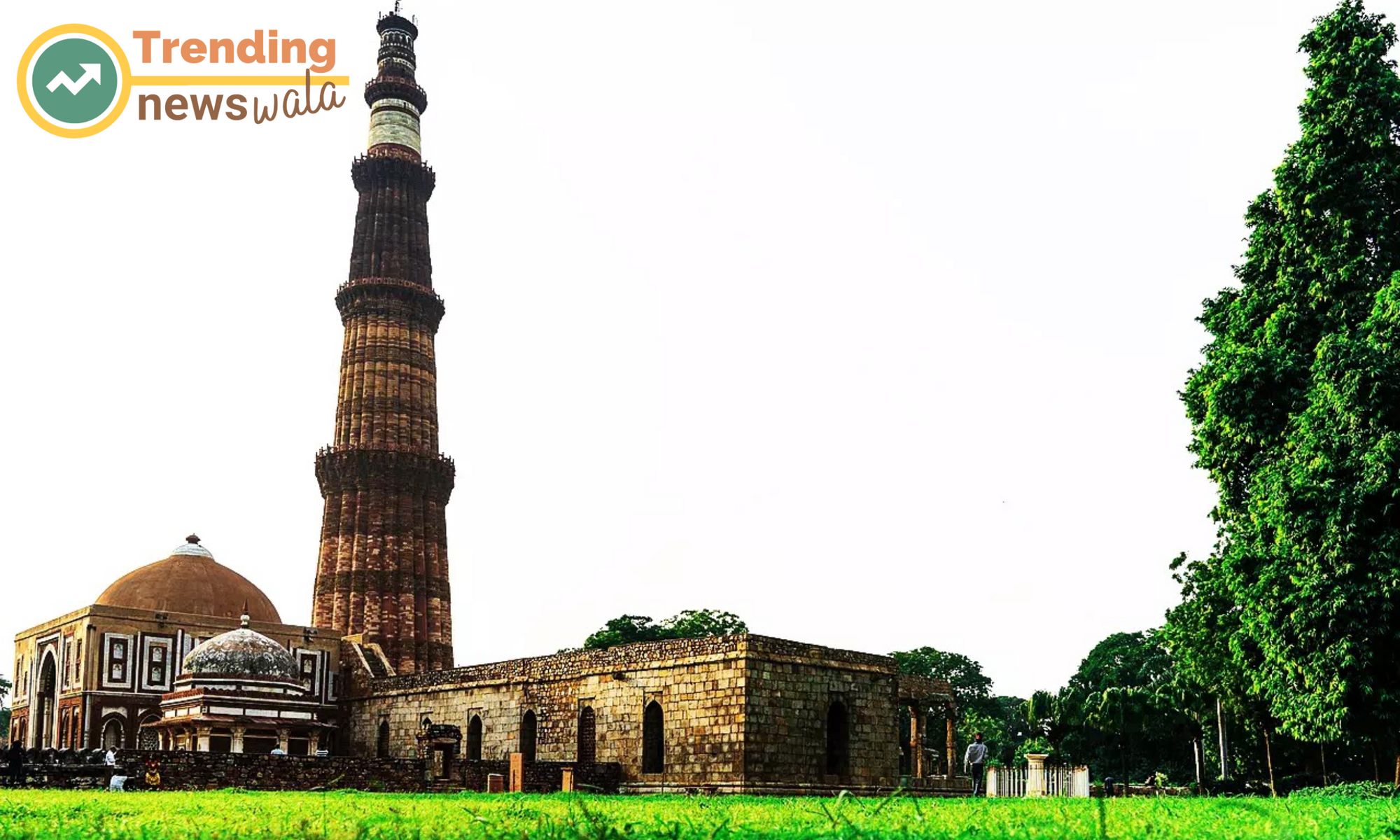
In recognition of its historical and architectural significance, the Qutub Minar and its complex were designated as a UNESCO World Heritage Site in 1993. The site attracts millions of visitors annually who marvel at its beauty and historical resonance.
The designation of a UNESCO World Heritage Site is a recognition bestowed by the United Nations Educational, Scientific and Cultural Organization (UNESCO) on places of outstanding cultural, natural, or mixed (both cultural and natural) significance. Here are more details about the UNESCO World Heritage Site designation:
Criteria for Selection: UNESCO designates sites based on their fulfillment of specific criteria. These criteria are categorized into cultural, natural, and mixed properties. The criteria include factors such as representing a masterpiece of human creative genius, exhibiting exceptional natural beauty, or being significant for human history.
Cultural Heritage Sites: Cultural heritage sites may include monuments, buildings, cities, or archaeological sites that hold cultural significance. Examples include historic cities, religious structures, industrial complexes, and other places that represent human achievements and contributions.
Natural Heritage Sites: Natural heritage sites are areas of outstanding natural beauty, ecological significance, or biodiversity. These could be national parks, wildlife reserves, geological formations, or ecosystems that have exceptional value for science, conservation, and environmental sustainability.
Mixed Heritage Sites : Some sites exhibit both cultural and natural significance, making them eligible for mixed heritage status. These sites often showcase the interconnection between human culture and the natural environment.
Universal Value: A key criterion for UNESCO designation is the site's outstanding universal value. This means that the site holds significance not only for the country where it is located but also for all of humanity. The site should represent a unique and irreplaceable asset that transcends national boundaries.
Protection and Preservation: UNESCO World Heritage status comes with the expectation that the designated site will be protected, preserved, and properly managed to ensure its integrity. This often involves collaboration between the country where the site is located, UNESCO, and the international community.
Identification and Nomination Process : The process of identifying and nominating a site for UNESCO World Heritage status involves thorough research, documentation, and evaluation. The country proposing the site must demonstrate how it meets the criteria and provide a management plan for its protection.
Committee Decision: The final decision on whether to inscribe a site on the World Heritage List is made by the World Heritage Committee, which consists of representatives from different countries. The committee meets annually to review nominations, assess the state of conservation of existing sites, and make decisions on new inscriptions.
Benefits of UNESCO Designation: Being designated as a UNESCO World Heritage Site brings international recognition and prestige to the site. It often results in increased tourism, funding for conservation efforts, and a commitment to sustainable development.
Challenges and Concerns: While UNESCO designation is prestigious, it also comes with challenges. Increased tourism can sometimes lead to overuse and degradation of the site. Balancing the need for conservation with the demands of tourism and development is an ongoing concern.
Delisting: In extreme cases, if a site fails to meet the criteria or faces significant threats, it may be placed on the List of World Heritage in Danger. In rare instances, a site may be delisted if it no longer meets the criteria or if its outstanding universal value is severely compromised.
In summary, UNESCO World Heritage Sites represent a global commitment to recognizing and preserving the world's most significant cultural and natural treasures. The designation aims to promote international collaboration in safeguarding humanity's shared heritage for future generations.
Cultural Syncretism and Heritage Preservation
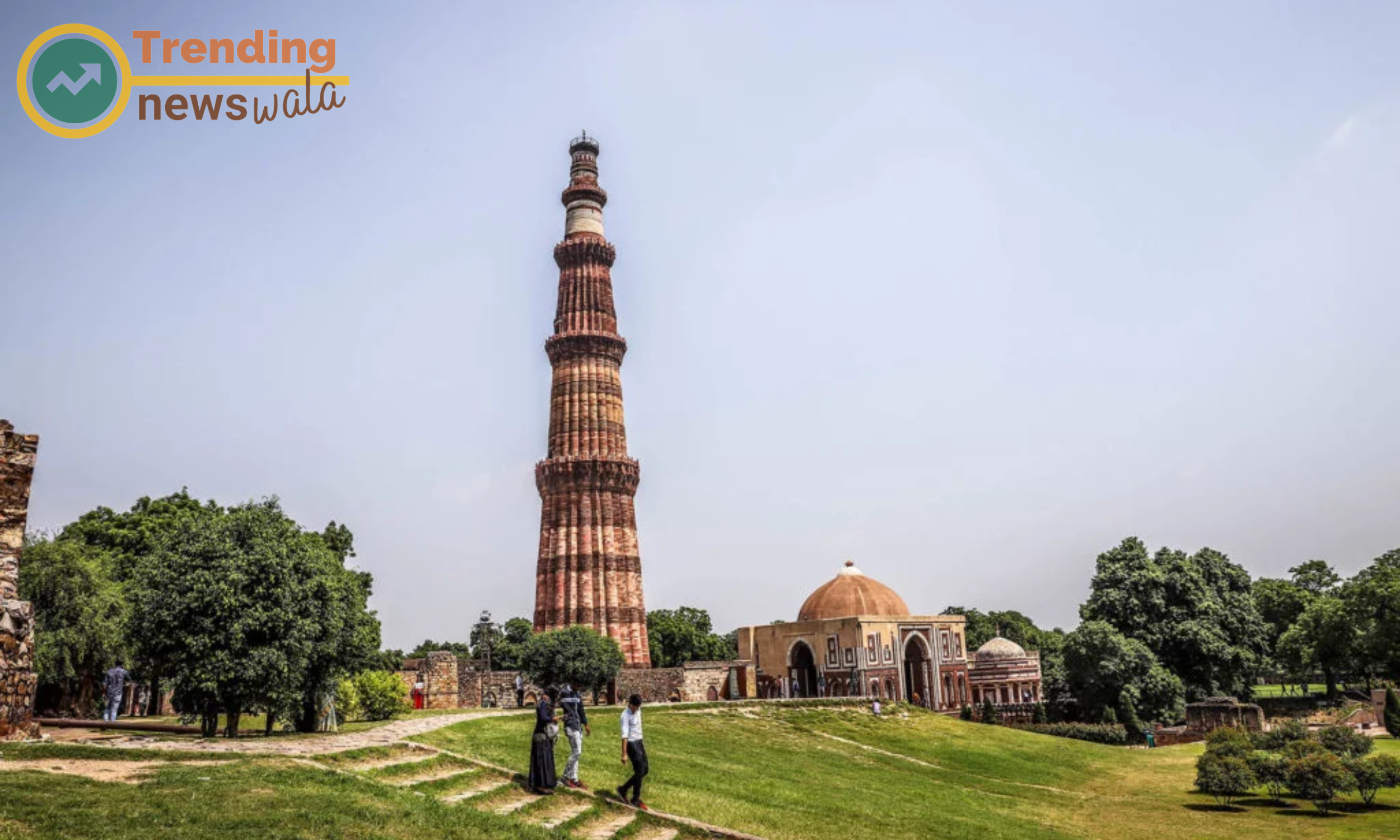
The Qutub Minar stands as a testament to India's cultural syncretism, where different religious and cultural influences have coexisted and intertwined over centuries. The preservation of the Qutub complex highlights the importance of safeguarding heritage sites that embody the diverse narratives of the nation.
Cultural syncretism refers to the blending or merging of different cultural elements, beliefs, and practices to create a new, unified cultural expression. Heritage preservation involves the protection, conservation, and promotion of cultural, historical, and natural assets to ensure their survival for future generations. Here are more details about cultural syncretism and heritage preservation:
Definition: Cultural syncretism involves the integration and coexistence of diverse cultural elements, often resulting in the creation of a new, hybrid culture. It occurs when different cultures come into contact, leading to the exchange and adaptation of customs, beliefs, languages, and artistic expressions.
Examples:
- Religious Syncretism: The blending of religious practices and beliefs, such as the fusion of indigenous and Catholic traditions in Latin American countries.
- Language Syncretism: The development of creole languages, which emerge from the mixing of different linguistic influences during colonization or trade.
- Artistic Syncretism: The fusion of artistic styles, seen in various forms like music, dance, and visual arts, where influences from different cultures merge.
Historical Context: Cultural syncretism often occurs during periods of cultural exchange, trade, migration, or conquest. It can be observed in regions where different cultures have coexisted and influenced each other over time.
Cultural Richness: Syncretism enhances the richness and diversity of cultures, creating unique expressions that reflect the history and interactions of different communities.
Cultural Adaptability: It demonstrates the adaptability of cultures to change and highlights their capacity to evolve in response to external influences.
Cultural Erosion: In some cases, cultural syncretism can lead to the erosion of traditional practices and identities, especially if one culture dominates or assimilates another.
Cultural Conflicts: The blending of cultures may also lead to conflicts and tensions, as communities may resist or feel threatened by changes to their cultural practices.
Definition: Heritage preservation involves the protection, conservation, and promotion of cultural, historical, and natural assets to maintain their significance and integrity. It aims to ensure that these assets are passed down to future generations.
Types of Heritage:
- Cultural Heritage: Includes tangible assets like monuments, buildings, artifacts, and intangible assets like traditions, languages, and customs.
- Natural Heritage: Encompasses ecosystems, biodiversity, landscapes, and natural features with ecological significance.
Conservation Methods:
- Restoration: Returning a heritage site or artifact to its original condition based on historical evidence and expert analysis.
- Preservation: Protecting and maintaining the existing condition of heritage assets to prevent deterioration.
- Documentation: Creating detailed records, including photographs, maps, and written descriptions, to document the heritage for future reference.
Role of International Organizations: UNESCO and other international organizations play a key role in coordinating efforts for heritage preservation. They provide guidelines, support, and funding for conservation projects worldwide.
Community Involvement: Successful heritage preservation often involves the active participation of local communities. Engaging communities helps in fostering a sense of ownership and responsibility for the protection of their heritage.
Sustainable Development: Balancing heritage preservation with sustainable development is essential. It involves managing tourism, urbanization, and other factors that may impact heritage sites while ensuring the well-being of local communities.
Educational Initiatives: Heritage preservation includes educational programs to raise awareness about the significance of cultural and natural assets. These programs promote a sense of responsibility and encourage public support for conservation efforts.
Technological Advancements: Advanced technologies, such as 3D modeling, remote sensing, and digital documentation, play a crucial role in heritage preservation by aiding in conservation, monitoring, and research.
In summary, cultural syncretism and heritage preservation are interconnected concepts that highlight the dynamic nature of cultures and the importance of safeguarding our shared human legacy. Cultural syncretism represents the evolving nature of societies, while heritage preservation ensures that the diverse expressions of human culture and nature are protected and celebrated for future generations.
Visitor Experience and Cultural Exploration
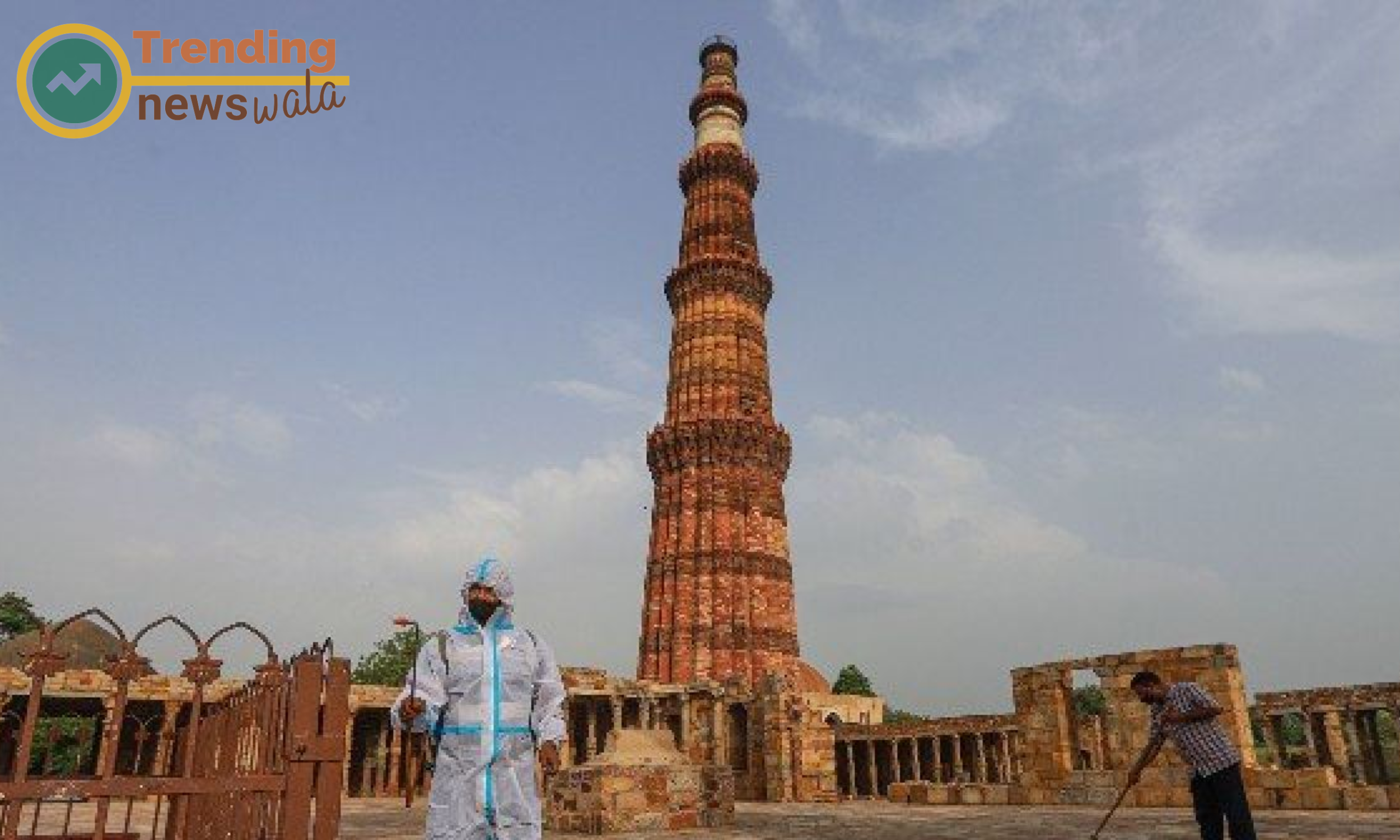
Today, the Qutub Minar remains a popular tourist destination, inviting visitors to explore its historical significance, appreciate its architectural brilliance, and contemplate the layers of history embedded within its stones. The site serves as a gateway for cultural enthusiasts to delve into the rich past of Delhi and witness the interplay of various civilizations.
Visitor experience and cultural exploration play vital roles in tourism and are crucial for fostering an understanding and appreciation of diverse cultures. Here are more details about these concepts:
Definition: Visitor experience encompasses the overall encounter and interactions a person has during their visit to a particular destination or attraction. It includes everything from the moment they arrive until they depart and involves various elements such as services, ambiance, and interactions with the local environment.
Key Elements:
- Hospitality: The friendliness and welcoming nature of the host community, including the behavior of locals, accommodation providers, and service staff.
- Attractions: The appeal and quality of the attractions or landmarks that visitors come to see.
- Services: The quality of services provided, including transportation, accommodation, dining, and guided tours.
- Accessibility: The ease with which visitors can navigate and access different parts of the destination.
Personalization: The trend towards personalized experiences is gaining importance. Tailoring experiences to individual preferences and interests enhances overall satisfaction.
Technology Integration: The use of technology, such as mobile apps, augmented reality, and virtual reality, contributes to a more immersive and interactive visitor experience.
Cultural Immersion: Opportunities for visitors to engage with local customs, traditions, and daily life contribute to a more enriching and authentic experience.
Feedback and Reviews: Visitor experiences are often shared through online platforms, reviews, and social media. Positive reviews can enhance a destination's reputation and attract more visitors.
Sustainability: Sustainable and responsible tourism practices contribute to a positive visitor experience. This includes minimizing the environmental impact and promoting the well-being of local communities.
Definition: Cultural exploration involves the active engagement and discovery of the cultural aspects of a destination. It goes beyond merely visiting landmarks and focuses on understanding and appreciating the local customs, traditions, art, language, and way of life.
Interactions with Locals: Engaging in conversations with local residents, artisans, and community members provides a deeper insight into the cultural fabric of a destination.
Participation in Local Activities: Participating in cultural events, festivals, workshops, and traditional activities allows visitors to immerse themselves in the local culture.
Culinary Experiences: Exploring local cuisine and dining at traditional eateries provides a sensory and cultural experience. Food is often an integral part of a destination's identity.
Visiting Cultural Institutions: Museums, art galleries, heritage sites, and cultural institutions offer opportunities for in-depth exploration of a destination's history, art, and cultural heritage.
Learning Language Basics: Learning a few basic phrases in the local language can enhance the cultural exploration experience and facilitate communication with locals.
Respectful Behavior: Understanding and respecting local customs and etiquette is essential for cultural exploration. This includes appropriate dress, greetings, and behavior in sacred or cultural spaces.
Cultural Awareness: Cultural exploration fosters a broader cultural awareness, promoting tolerance, understanding, and appreciation of diversity.
Photography and Documentation: Documenting cultural experiences through photography or journals helps in creating lasting memories and sharing insights with others.
Impact on Sustainable Tourism: Cultural exploration that respects and values local traditions contributes to sustainable tourism by promoting cultural preservation and supporting the economic well-being of local communities.
In summary, a positive visitor experience is closely linked to cultural exploration, which involves actively seeking to understand and engage with the cultural elements of a destination. Both concepts contribute to a more meaningful and mutually beneficial interaction between visitors and the places they explore.

